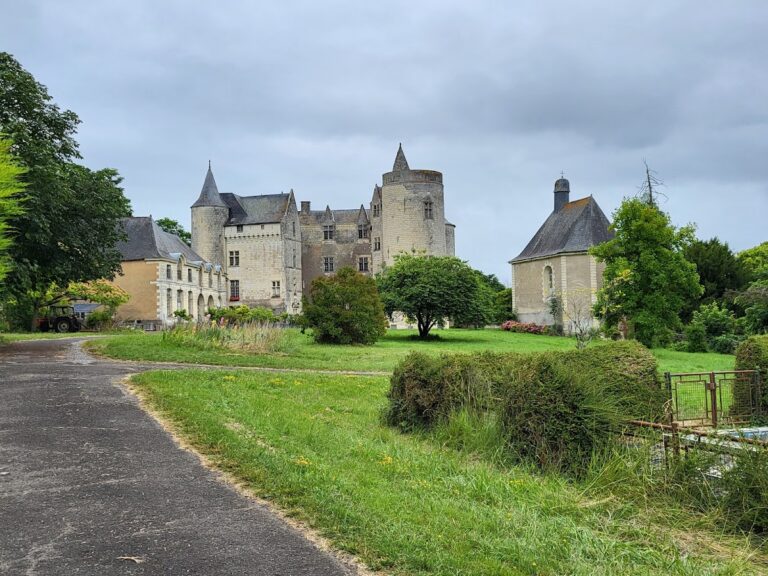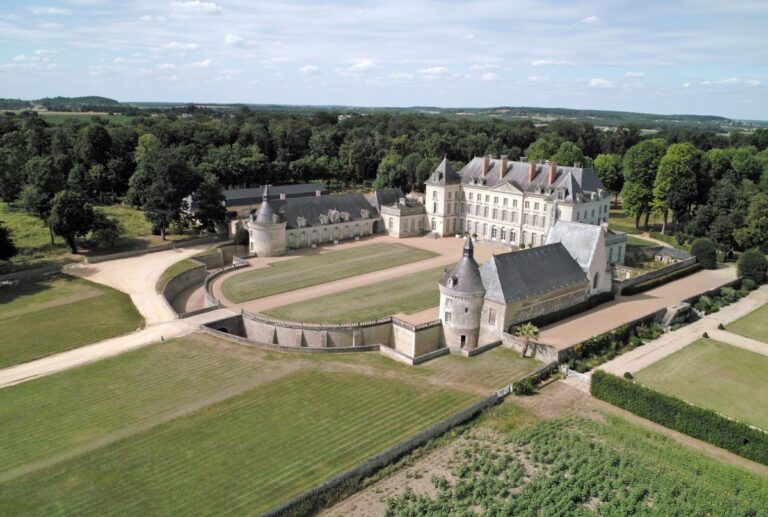Château de Pimpéan: A Historic Medieval Estate in Gennes-Val-de-Loire, France
Visitor Information
Google Rating: 4.5
Popularity: Very Low
Google Maps: View on Google Maps
Official Website: www.chateaudepimpean.com
Country: France
Civilization: Unclassified
Remains: Military
History
The Château de Pimpéan is situated in the commune of Gennes-Val-de-Loire, France. Its origins are tied to the medieval period, with connections to early feudal lineages in the region. The name “Pimpéan” likely derives from “Péan du Pin,” a designation found in 12th-century charters of the nearby area of Vieil-Baugé, indicating a longstanding historical identity.
Initially, the estate belonged to the baron of Trèves but changed hands several times during the 15th century. In 1429, Macé de Tessé de Chandemanche transferred the seigneurie to Jean Galardin and Marie de Charnières, who soon passed it to Jean de Brézé. The château as it stands today was built by Bertrand de Beauvau, an influential figure and brother of Pierre de Beauvau, who acquired the property in 1435. Bertrand expanded the domain in 1443, and his ownership was officially affirmed by King René of Anjou in 1461. A royal authorization allowing the erection of gallows on the estate was granted in 1463, underscoring the seigneurie’s judicial privileges.
The Beauvau family maintained control over Pimpéan through successive generations, including Antoine, Louis, René, and André de Beauvau-Pimpéan. Notably, André also acquired the town of Cholet in 1578 and married Philippe de Naillac. His life was marked by a dramatic event in 1579 when he was executed for killing a judicial officer, indicating the turbulent local power struggles of the period.
Following this, the property passed through alliances and marriages involving Philippe de Naillac, Claude III Barjot de Moussy, and their descendants Léonor I Barjot and Renée-Gabrielle de Beauvau-Pimpéan. Their heirs, Léonor II Barjot and René Barjot de Moussy, were part of a prolonged inheritance dispute lasting six years, resolved in 1669. The settlement resulted in the château transferring to Henry René Robin de la Tremblaye, who by the late 17th century acknowledged his holdings, including Pimpéan, under the baron of Trèves.
Henri-René Robin de La Tremblaye, born around 1623 and deceased in 1711, later received the title of marquis d’Alligny, incorporating Pimpéan into this marquisate. His descendants, including Amable and Claude-René Robin, continued the lineage of ownership. In 1754, Claude-René Robin sold the estate to Pierre de la Lande-Guyon, a wealthy advisor involved in colonial affairs. Afterward, the property passed to Thomas Gendron in 1803 through acquisition by the widow of La Lande-Guyon.
In recognition of its historical significance, the Château de Pimpéan was officially classified as a historic monument in 1959, ensuring its protection and acknowledgment within France’s cultural heritage.
Remains
Archaeological sources confirm the presence of the château as it was constructed in the 15th century by Bertrand de Beauvau. While specific details about the building’s layout or decorative elements have not been recorded, photographic evidence attests to its physical presence and preservation.
The construction primarily reflects medieval building traditions corresponding to its period, although the exact materials and techniques remain unspecified. There is no documentation of particular features such as inscriptions, archaeological finds, or significant modifications over time described in available historical records.
Given that royal permissions extended to judicial activities on the estate, including the establishment of gallows in 1463, it is conceivable the site included facilities consistent with such functions, though direct archaeological descriptions do not elaborate on this aspect.
Today, the château survives as a registered historic monument, preserving its place on the landscape and in the story of the region, even as detailed architectural analyses are limited to visual records without further published archaeological commentary.







